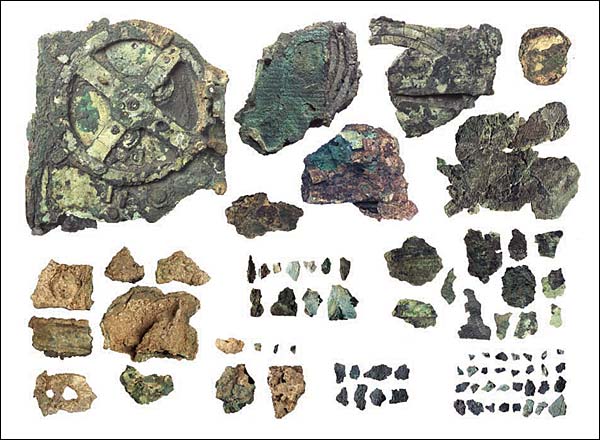The Antikythera mechanism is the world's oldest known computer (150–100 BC). Various parts of this intricate cog-based instrument were discovered in a shipwreck back in 1900-1901, although the purpose of it, to accurately predict astronomical positions, was not determined until many decades later.
From a recent article in Nature:
Two thousand years ago, a Greek mechanic set out to build a machine that would model the workings of the known Universe. The result was a complex clockwork mechanism that displayed the motions of the Sun, Moon and planets on precisely marked dials. By turning a handle, the creator could watch his tiny celestial bodies trace their undulating paths through the sky.
The mechanic's name is now lost. But his machine, dubbed the Antikythera mechanism, is by far the most technologically sophisticated artefact that survives from antiquity. Since a reconstruction of the device hit the headlines in 2006, it has revolutionized ideas about the technology of the ancient world, and has captured the public imagination as the apparent pinnacle of Greek scientific achievement.
Now, some clever big kids have reconstructed it...
With freakin' LEGO!!


3 comments:
Thanks for posting that, Rhiggs. Very cool.
I'll send it along to my son.
By the way, we'll be seeing a total eclipse of the moon here on the 20-Dec.....if, it's not cloudy, but this time of year the chances of that are not too good.
Thanks Froggie,
Enjoy the eclipse tonight!
At 01:30 Eastern Time I went outside and watched the undersides of clouds for 30 minutes. :(
I really wonder where the precursors of the Antikythera mechanism are. It is clearly the product of a history of both precision metal working and astronomy, and there have to be precursors somewhere.
Post a Comment